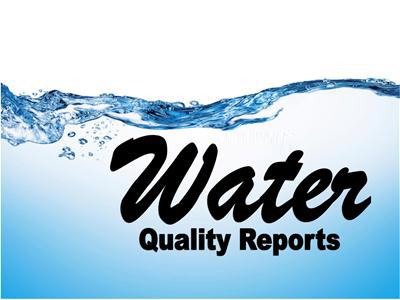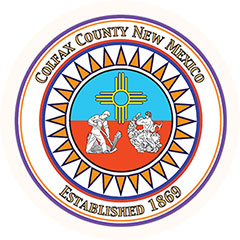MIAMI DOMESTIC WATER USERS ASSOCATION (NM35-26504)
2016 CONSUMER CONFIDENCE REPORT (CCR)
Spanish (Espanol)
Este informe contiene informacion muy importante sobre la calidad de su agua potable. Por favor lea este informe o comuniquese con alguien que pueda traducir la informacion.
Is my water safe?
We are pleased to present this year’s Annual Water Quality Report (Consumer Confidence Report) as required by the Safe Drinking Water Act (SDWA). This report is designed to provide details about where your water comes from, what it contains, and how it compares to standards set by regulatory agencies. This report is a snapshot of last year’s water quality. We are committed to providing you with information because informed customers are our best allies. Last year, we conducted tests for over 80 contaminants. We had only 2 HAA (Haloacetic acid) results at a level higher than the EPA allows. As we informed you at the time, our water temporarily exceeded drinking water standards. (For more information see the section labeled Violations.)
Do I need to take special precautions?
Some people may be more vulnerable to contaminants in drinking water than the general population. Immuno-compromised persons such as persons with cancer undergoing chemotherapy, persons who have undergone organ transplants, people with HIV/AIDS or other immune system disorders, some elderly, and infants can be particularly at risk from infections. These people should seek advice about drinking water from their health care providers. EPA/Centers for Disease Control (CDC) guidelines on appropriate means to lessen the risk of infection by Cryptosporidium and other microbial contaminants are available from the Safe Water Drinking Hotline (800-426-4791).
Where does my water come from?
MDWUA’s water source is surface water via a pipeline from Miami Lake located 6 miles west of Miami to either a pond located next to the filter plant or diverted directly into the filter plant.
Source water assessment and its availability
MDWUA’s source water assessment has been completed. It is on file at our office if you are interested in reviewing the assessment contact Tori Vigil or Mike Vigil.
A Sanitary Survey (inspection of plant site operations, reports, training, etc.) was conducted by NMED on November 3, 2015. Three deficiencies were identified and have been corrected:
- Drain line for storage tank #1 not screened. (Corrected 11/24/2015)
- Cross connection potential when drawing water from storage tank #1. (Corrected 1/05/2016)
- Leak found in water lines located in the treatment plant. (Corrected 2/16/2016)
Why are there contaminants in my drinking water?
Drinking water, including bottled water, may reasonably be expected to contain at least small amounts of some contaminants. The presence of contaminants does not necessarily indicate that water poses a health risk. More information about contaminants and potential health effects can be obtained by calling the Environmental Protection Agency’s (EPA) Safe Drinking Water Hotline (800-426-4791).
The sources of drinking water (both tap water and bottled water) include rivers, lakes, streams, ponds, reservoirs, springs, and wells. As water travels over the surface of the land or through the ground, it dissolves naturally occurring minerals and, in some cases, radioactive material, and can pick up substances resulting from the presence of animals or from human activity: microbial contaminants, such as viruses and bacteria, that may come from sewage treatment plants, septic systems, agricultural livestock operations, and wildlife; inorganic contaminants, such as salts and metals, which can be naturally occurring or result from urban storm water runoff, industrial, or domestic wastewater discharges, oil and gas production, mining, or farming; pesticides and herbicides, which may come from a variety of sources such as agriculture, urban storm water runoff, and residential uses; organic Chemical Contaminants, including synthetic and volatile organic chemicals, which are by-products of industrial processes and petroleum production, and can also come from gas stations, urban storm water runoff, and septic systems; and radioactive contaminants, which can be naturally occurring or be the result of oil and gas production and mining activities. In order to ensure that tap water is safe to drink, EPA prescribes regulations that limit the amount of certain contaminants in water provided by public water systems. Food and Drug Administration (FDA) regulations establish limits for contaminants in bottled water which must provide the same protection for public health.
Monitoring and reporting of compliance data violations
The system did not receive any Monitoring, Routine Reporting Violations in 2016.
The system continues to intermittently exceed the maximum contaminant level violations on Haloacetic Acids (HAA) and Trihalomethanes (TTHM) which are by-products of using chlorine disinfectant. The running annual averages at the end of 2016 exceeded the maximum contaminant HAA levels (3/08/2016 & 12/08/2016). A treated water tank circulation, spraying & aeration system has been installed and is currently being tested. The tank spraying and aeration system has provided significant results in reducing the disinfectant levels, but spikes in the reporting results show that the problem is not completely resolved. At this time MDWUA has retained an engineering firm to determine the best solution in resolving the HAA & TTHM problem. NMED has granted an extension on our Administrative Order of Compliance until March 2018 to correct the problems.
| Violations and Exceedances |
| Haloacetic Acids (HAA5) |
| Some people who drink water containing Haloacetic acids in excess of the MCL over many years may have an increased risk of getting cancer. A mixed oxidants system has been installed to reduce the amount of bio-film produced in the distribution system. That in conjunction with a treated water tank sprayer & aeration system has significantly reduced the amount of HAA5’s in the distribution system. |
| TTHMs [Total Trihalomethanes]
Some people who drink water containing Trihalomethanes in excess of the MCL over many years may experience problems with their liver, kidneys, or central nervous system, and may have an increased risk of getting cancer. The MIOX disinfectant system was installed to replace the 10% chlorine that was contributing to the disinfectant by-products problems. A Solar Bee water tank treatment system that purges disinfectant by-products from the water has been installed in the 45,000 gallon treated water tank to help eliminate TTHMs. |
Additional Information for Lead
If present, elevated levels of lead can cause serious health problems, especially for pregnant women and young children. Lead in drinking water is primarily from materials and components associated with service lines and home plumbing. Miami Domestic Water Users Association is responsible for providing high quality drinking water, but cannot control the variety of materials used in plumbing components. When your water has been sitting for several hours, you can minimize the potential for lead exposure by flushing your tap for 30 seconds to 2 minutes before using water for drinking or cooking. If you are concerned about lead in your water, you may wish to have your water tested. Information on lead in drinking water, testing methods, and steps you can take to minimize exposure is available from the Safe Drinking Water Hotline or at http://www.epa.gov/safewater/lead.
Water Quality Data Table
In order to ensure that tap water is safe to drink, EPA prescribes regulations which limit the amount of contaminants in water provided by public water systems. The table below lists all of the drinking water contaminants that we detected during the calendar year of this report. Although many more contaminants were tested, only those substances listed below were found in your water. All sources of drinking water contain some naturally occurring contaminants. At low levels, these substances are generally not harmful in our drinking water. Removing all contaminants would be extremely expensive, and in most cases, would not provide increased protection of public health. A few naturally occurring minerals may actually improve the taste of drinking water and have nutritional value at low levels. Unless otherwise noted, the data presented in this table is from testing done in the calendar year of the report. The EPA or the State requires us to monitor for certain contaminants less than once per year because the concentrations of these contaminants do not vary significantly from year to year, or the system is not considered vulnerable to this type of contamination. As such, some of our data, though representative, may be more than one year old. In this table you will find terms and abbreviations that might not be familiar to you. To help you better understand these terms, we have provided the definitions below the table.
Chlorine Residual Compliance Determination
- The highest chlorine residual monthly average was 0.44 mg/L. The Monthly Average (MA) is determined by averaging all disinfectant residual results collected during the month.
- The Running Annual Average (RAA) is determined by averaging the last twelve MAs.
- At the end of each quarter, compliance is based on the RAA of monthly averages. If the RAA is at or below the MRDL of 4.0 mg/L, the system is in compliance.
- Was the maximum residual disinfectant violated? X No Yes
Filtered Water Turbidity
- The highest single day turbidity recording of 0.185 NTU was recorded in August 2016. Percentage of Readings below 95% NTU Limit of 0.3 NTU: 100%
- Number of Readings above MAX NTU Limit of 1.0 NTU: 0
| Contaminants | MCLG or MRDLG |
MCL, TT, or MRDL |
Your Water |
Range | Sample Date |
Violation | Typical Source | |
| Low | High | |||||||
| Disinfectants & Disinfection By-Products | ||||||||
| (There is convincing evidence that addition of a disinfectant is necessary for control of microbial contaminants) | ||||||||
| Haloacetic Acids (HAA5) (ppb) | NA | 60 | 56 | 4.9 | 65 | 2016 | yes | By-product of drinking water chlorination |
| TTHMs [Total Trihalomethanes] (ppb) | NA | 80 | 45 | 43.0 | 68 | 2016 | no | By-product of drinking water disinfection |
| Inorganic Contaminants | ||||||||
| Nitrate [measured as Nitrogen] (ppm) | 10 | 10 | 0.21 | NA | 2016 | No | Runoff from fertilizer use; Leaching from septic tanks, sewage; Erosion of natural deposits | |
| Arsenic (ppb) | 0 | 10 | ND | NA | 2016 | No | Erosion of natural deposits; Runoff from orchards; Runoff from glass and electronics production wastes | |
| Fluoride (ppm) | 4 | 4 | .28 | NA | 2016 | No | Erosion of natural deposits; Water additive which promotes strong teeth; Discharge from fertilizer and aluminum factories | |
| Radioactive Contaminants | ||||||||
| Alpha emitters (pCi/L) | 0 | 15 | .6 | NA | NA | 2016 | No | Erosion of natural deposits |
| Radium (combined 226/228) (pCi/L) | 0 | 5 | .02 | NA | NA | 2016 | No | Erosion of natural deposits |
| Uranium (ug/L) | 0 | 30 | 1 | NA | NA | 2016 | No | Erosion of natural deposits |
| Contaminants | MCLG | AL | Your Water |
Sample Date |
# Samples Exceeding AL |
Exceeds AL | Typical Source |
| Inorganic Contaminants | |||||||
| Asbestos (MFL) | 7 | 7 | 0.2 | 2014 | 0 | No | Decay of asbestos cement water mains; Erosion of natural deposits |
| Copper – action level at consumer taps (ppm) | 1.3 | 1.3 | .1 | 2016 | 0 | No | Corrosion of household plumbing systems; Erosion of natural deposits |
| Lead – action level at consumer taps (ppb) | 0 | 15 | 2.0 | 2016 | 0 | No | Corrosion of household plumbing systems; Erosion of natural deposits |
| Unit Descriptions | |
| Term | Definition |
| ppm | ppm: parts per million, or milligrams per liter (mg/L) |
| ppb | ppb: parts per billion, or micrograms per liter (µg/L) |
| ppt | ppt: parts per trillion, or nanograms per liter |
| pCi/L | pCi/L: picocuries per liter (a measure of radioactivity) |
| MFL | MFL: million fibers per liter, used to measure asbestos concentration |
| NA | NA: not applicable |
| ND | ND: Not detected |
| NR | NR: Monitoring not required, but recommended. |
| Important Drinking Water Definitions | |
| Term | Definition |
| MCLG | MCLG: Maximum Contaminant Level Goal: The level of a contaminant in drinking water below which there is no known or expected risk to health. MCLGs allow for a margin of safety. |
| MCL | MCL: Maximum Contaminant Level: The highest level of a contaminant that is allowed in drinking water. MCLs are set as close to the MCLGs as feasible using the best available treatment technology. |
| TT | TT: Treatment Technique: A required process intended to reduce the level of a contaminant in drinking water. |
| AL | AL: Action Level: The concentration of a contaminant which, if exceeded, triggers treatment or other requirements which a water system must follow. |
| Variances and Exemptions | Variances and Exemptions: State or EPA permission not to meet an MCL or a treatment technique under certain conditions. |
| MRDLG | MRDLG: Maximum residual disinfection level goal. The level of a drinking water disinfectant below which there is no known or expected risk to health. MRDLGs do not reflect the benefits of the use of disinfectants to control microbial contaminants. |
| MRDL | MRDL: Maximum residual disinfectant level. The highest level of a disinfectant allowed in drinking water. There is convincing evidence that addition of a disinfectant is necessary for control of microbial contaminants. |
| MNR | MNR: Monitored Not Regulated |
| MPL | MPL: State Assigned Maximum Permissible Level |
| For more information please contact: |
Contact Name: Mike Vigil
Address: PO Box 295
Springer, NM 87747
Phone: 575-483-0188





